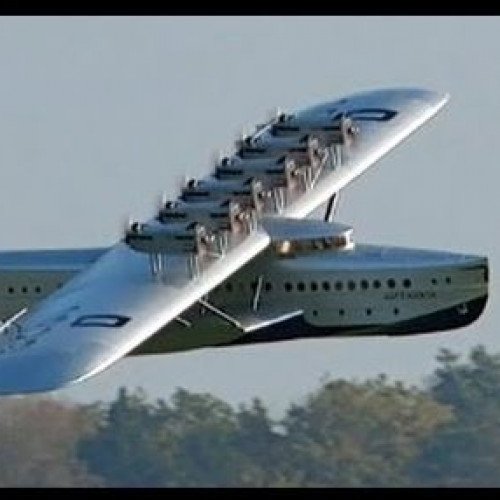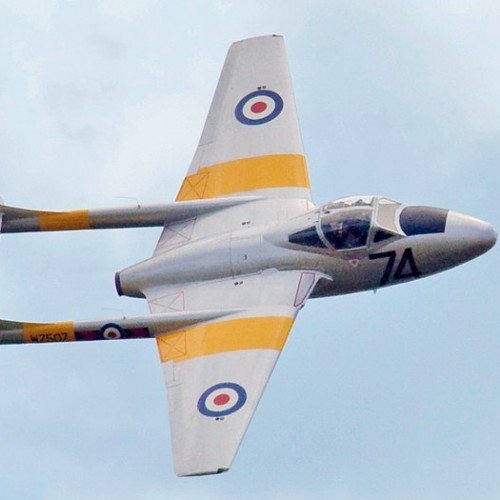Dornier Do 10 vs

Dornier Do 10
The Dornier Do 10, originally designated Dornier Do C4, was the name given by the Reichsluftfahrtministerium (RLM) of a pre-World War II German aircraft. It was a two-seat parasol-wing monoplane, intended to be used as a fighter. Two prototypes were built in 1931 to fulfil a requirement for a two-seat fighter. Having failed to gain a production order, the Do C4 / Do 10 was used to test a tilting engine installation and propellers to suit, for STOL tests.
Statistics for this Xoptio

de Havilland Vampire
The de Havilland Vampire is a British jet fighter which was developed and manufactured by the de Havilland Aircraft Company. It was the second jet fighter to be operated by the RAF, after the Gloster Meteor, and the first to be powered by a single jet engine. Development of the Vampire as an experimental aircraft began in 1941 during the Second World War, to exploit the groundbreaking innovation of jet propulsion. From the company's design studies, it was decided to use a single-engine, twin-boom aircraft, powered by the Halford H.1 turbojet (later produced as the "Goblin"). Aside from its propulsion system and twin-boom configuration, it was a relatively conventional aircraft. In May 1944 it was decided to mass-produce the aircraft as an interceptor for the Royal Air Force (RAF). In 1946 the Vampire entered operational service with the RAF, only months after the war had ended. The Vampire quickly proved to be effective and was adopted as a replacement of wartime piston-engined fighter aircraft. During its early service it accomplished several aviation firsts and achieved various records, such as being the first jet aircraft to cross the Atlantic Ocean. The Vampire remained in front-line RAF service until 1953 when it was progressively reassigned to various secondary roles, such as ground attack and pilot training, for which specialist variants were produced. The RAF retired the Vampire in 1966 when its final role of advanced trainer was filled by the Folland Gnat. The Royal Navy had also adapted the type as the Sea Vampire, a navalised variant suitable for operations from aircraft carriers. It was the service's first jet fighter. The Vampire was exported to a wide variety of nations and was operated worldwide in numerous theatres and climates. Several countries deployed the type in combat during conflicts, including the Suez Crisis, the Malayan Emergency, and the Rhodesian Bush War. By the end of production, almost 3,300 Vampires had been manufactured, a quarter of these having been manufactured under licence in several other countries. In addition, de Havilland pursued the further development of the type; major derivatives produced include the DH.115, a dedicated dual-seat trainer, and the more advanced DH.112 Venom, a refined variant furnished with a swept wing (instead of the straight wing of the Vampire) and oriented towards conducting ground attack and night fighter operations.